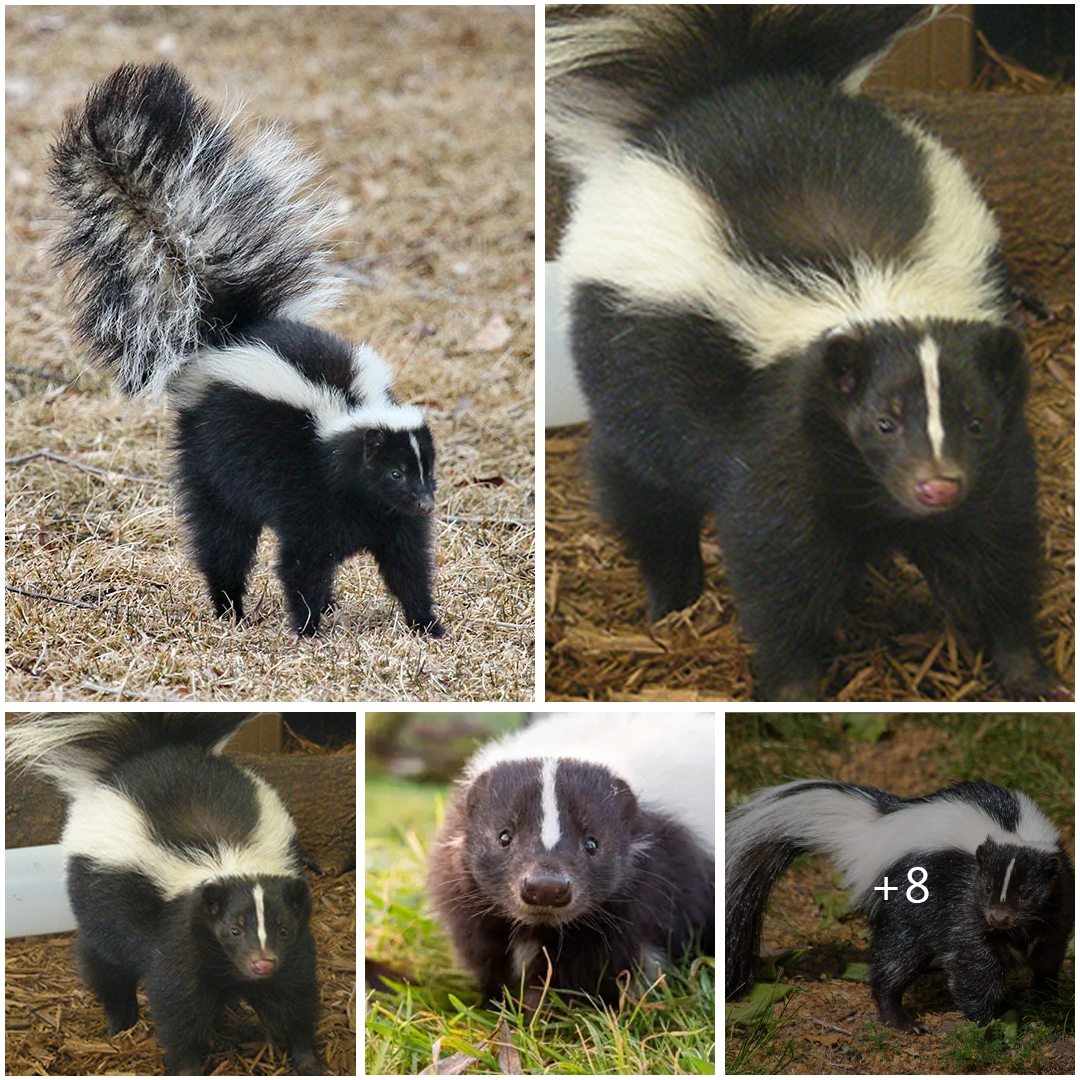
Unveiling the Mysteries of the Striped Skunk
In the realm of North American wildlife, one creature stands out for its distinctive appearance and notorious defense mechanism: the striped skunk (Mephitis mephitis). With its bold black and white markings and pungent odor, the striped skunk holds a unique place in the ecosystem. Let’s delve into the intriguing world of this charismatic mammal and uncover its secrets.
Appearance and Identification
The striped skunk is easily recognizable by its striking coloration, featuring alternating black and white stripes running along its body from head to tail. These bold markings serve as a warning to potential predators, signaling the skunk’s potent defensive capabilities. On average, striped skunks measure about 20-30 inches in length, with bushy tails comprising nearly half of their total body length.
Habitat and Distribution
Striped skunks are highly adaptable creatures found throughout North America, from southern Canada to northern Mexico. They inhabit a variety of environments, including forests, grasslands, suburbs, and urban areas. Despite their ability to thrive in diverse habitats, striped skunks prefer areas with access to water sources and ample shelter, such as wooded areas and brush piles.
Behavior and Diet
Primarily nocturnal, striped skunks are most active during the twilight hours, foraging for food under the cover of darkness. They are omnivorous scavengers with a varied diet that includes insects, small mammals, bird eggs, fruits, and vegetables. Their keen sense of smell and sharp claws aid them in locating and excavating food sources.
Defense Mechanism
One of the most well-known features of the striped skunk is its potent defensive weapon: the ability to spray a noxious musk from glands located near the base of its tail. When threatened, the skunk will arch its back, raise its tail, and release a pungent spray that can reach distances of up to 10 feet. This malodorous secretion serves as a powerful deterrent against predators, effectively warding off potential threats.
Reproduction and Life Cycle
Breeding typically occurs in late winter or early spring, with females giving birth to litters of 4-8 offspring after a gestation period of about 60-75 days. The young, called kits, are born blind and helpless, relying on their mother for warmth and nourishment. They begin to venture out of the den at around 6-8 weeks of age, gradually learning essential survival skills from their mother.
Conservation Status and Threats
Despite their adaptable nature, striped skunk populations face threats from habitat loss, vehicle collisions, and human persecution. Additionally, they are susceptible to diseases such as rabies and distemper, which can decimate local populations. Conservation efforts aimed at preserving natural habitats and implementing humane coexistence strategies are essential for ensuring the continued survival of this iconic North American species.
Conclusion
The striped skunk is a fascinating and misunderstood member of North America’s wildlife community. With its distinctive appearance, nocturnal habits, and potent defense mechanism, this enigmatic mammal continues to intrigue and captivate both scientists and nature enthusiasts. By fostering a deeper understanding and appreciation for the striped skunk’s role in the ecosystem, we can work towards ensuring its conservation and long-term survival in the wild.





